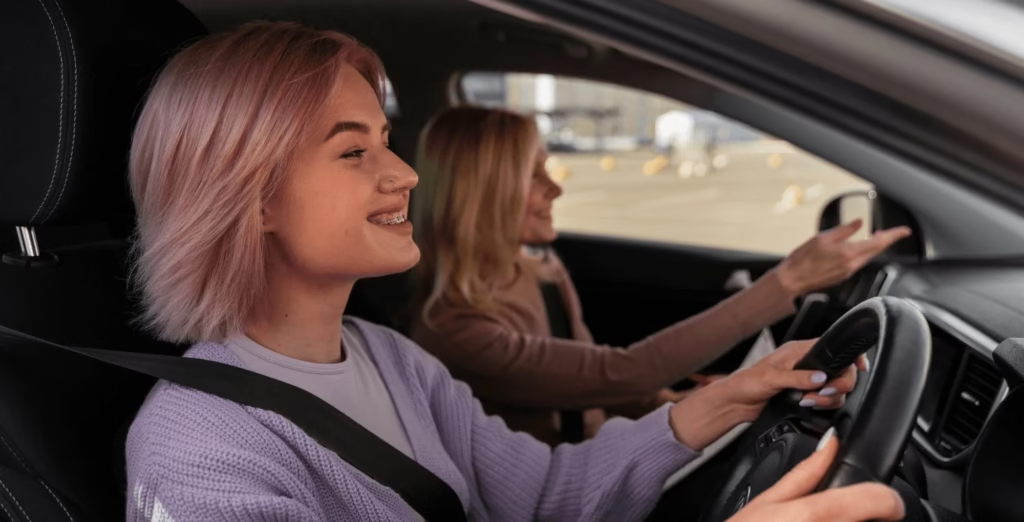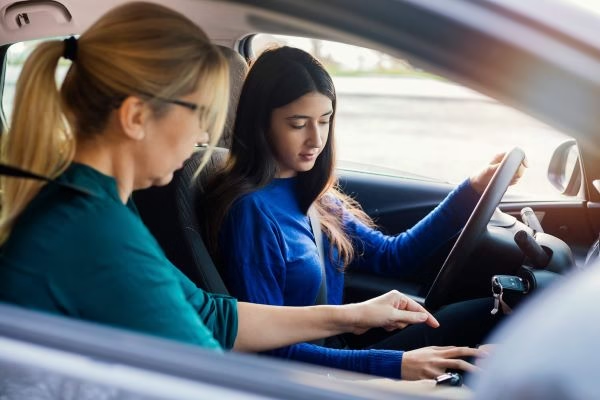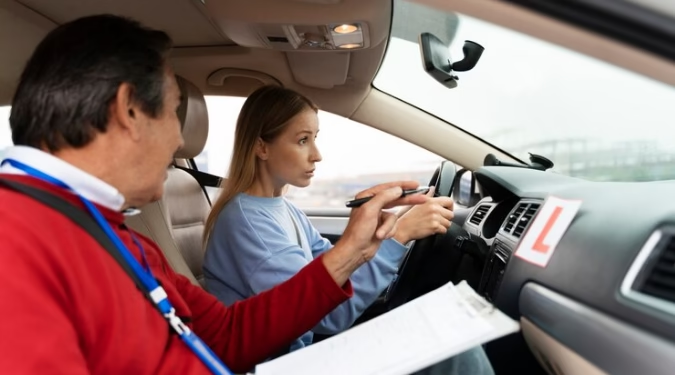Driving Lessons for Beginners: A Complete Guide to Getting Started Behind the Wheel
Driving lessons for beginners are the critical first step toward gaining independence and confidence on the road. Whether you are a teenager eager to earn your first license or an adult learning to drive later in life, structured and professional instruction ensures that you acquire safe driving habits, understand traffic laws, and feel confident operating a vehicle in real-life situations. This detailed guide walks you through every essential stage of beginner driving lessons — from understanding the basics to passing your driving test with confidence.

Why Driving Lessons for Beginners Matter
Learning to drive isn’t just about turning the ignition and stepping on the gas — it’s about mastering a life skill that ensures your safety and the safety of others.
Building Foundational Driving Habits
Beginner lessons teach students the correct posture, steering control, mirror usage, and awareness from the very beginning, forming habits that last a lifetime.
Reducing Anxiety and Increasing Confidence
Having a certified instructor who guides you calmly through each step of the learning process greatly reduces stress and fear during early driving experiences.
Meeting Legal Requirements
In many regions, completing a formal set of driving lessons is required before taking a driving test or even applying for a learner’s permit.
What to Expect from Beginner Driving Lessons
Overview of a Standard Beginner Curriculum
Driving schools often follow a structured curriculum designed specifically for novice drivers.
Common Topics Covered in the First Few Lessons
-
Introduction to vehicle controls
-
Starting and stopping smoothly
-
Steering and lane discipline
-
Understanding basic road signs
-
Parking basics
Theoretical Lessons vs Practical Lessons
Driving lessons usually combine both theory (classroom or online) and practical driving experience.
Breakdown of Lesson Structure
| Type of Lesson | Topics Covered | Duration (Average) |
|---|---|---|
| Theory Lessons | Traffic rules, signs, driver responsibilities | 8–12 hours |
| Practical Driving | On-road driving, turning, parking | 20–30 hours |
| Simulation Practice | Virtual environment for practice scenarios | Optional, 5–10 hours |

Key Skills Learned in Beginner Driving Lessons
Starting the Vehicle and Moving Off
Beginners learn how to adjust mirrors, fasten seat belts, start the car, and begin moving smoothly.
Skills Emphasized
-
Checking surroundings before starting
-
Releasing the handbrake properly
-
Gradual acceleration
Steering Control and Lane Positioning
Proper steering techniques are vital for staying safe and centered in your lane.
Topics Taught
-
Hand-over-hand steering method
-
Navigating curves and corners
-
Lane discipline in different traffic situations
Stopping and Parking Safely
Knowing how and where to stop a vehicle is as important as driving itself.
Common Types of Parking
-
Parallel parking
-
Reverse parking
-
Angle parking
Understanding Road Rules and Signage
Introduction to Traffic Signs
Beginners must learn to identify and respond to different road signs and signals.
Categories of Road Signs
| Sign Type | Description | Examples |
|---|---|---|
| Regulatory | Indicate rules that must be followed | Stop, Yield, Speed Limits |
| Warning | Alert drivers to hazards or changes ahead | Curve Ahead, School Zone |
| Informational | Provide guidance or directions | Exit Signs, Gas Station |
Understanding Right of Way
One of the most confusing parts for beginners is knowing who has the right of way in intersections, roundabouts, and four-way stops.
Common Right of Way Scenarios
-
At 4-way stops
-
In roundabouts
-
When merging onto highways
-
Pedestrian crossings
Defensive Driving for Beginners
While most beginner lessons focus on basic vehicle control, learning defensive driving strategies is equally crucial for long-term safety.
What Is Defensive Driving?
Defensive driving is the practice of anticipating and avoiding potential hazards before they become real threats.
Core Principles of Defensive Driving
-
Stay alert and minimize distractions
-
Keep a safe following distance
-
Expect other drivers to make mistakes
-
Always have an escape route
Practical Defensive Driving Exercises
Techniques Taught
-
Emergency braking
-
Skid recovery
-
Mirror checks and blind spot monitoring
-
Avoiding tailgating and aggressive drivers
Preparing for the Driving Test
Once you’ve completed your beginner lessons, the next step is passing the driving test, which typically includes both written and practical components.
How to Prepare for the Written Test
Study Strategies
-
Use official driver’s handbooks
-
Take practice exams regularly
-
Watch instructional videos for visual learners
-
Understand road signs and markings
How to Prepare for the Practical Test
The on-road test is designed to evaluate how safely and confidently you can drive in real traffic conditions.
Areas Examiners Focus On
-
Smooth steering and gear handling
-
Awareness of surroundings and mirrors
-
Proper signaling and stopping
-
Parking accuracy and vehicle control

Common Mistakes Beginners Should Avoid
Even well-prepared students can make simple mistakes that lead to failing the test or unsafe driving.
Top Errors During Driving Lessons
-
Forgetting to check mirrors before changing lanes
-
Rolling stops instead of full stops at signs
-
Driving too slowly or too fast
-
Misjudging distances while parking
How to Overcome These Mistakes
-
Record lessons and review with your instructor
-
Use driving simulators to improve decision-making
-
Ask for specific feedback after each session
Practice Makes Perfect: How to Reinforce Learning
At-Home Practice Ideas for Beginners
Practicing between lessons is key to building muscle memory and confidence.
Safe Practice Activities
-
Steering while stationary to get comfortable
-
Parking in empty lots
-
Practicing turns and lane changes in quiet areas
-
Reviewing mirror adjustment and seat positioning
The Role of Supervisors in Practice
If you’re practicing with a parent or guardian, they should:
-
Stay calm and patient
-
Give clear, simple instructions
-
Avoid shouting or panicking
-
Reinforce what was taught in lessons
Scheduling and Lesson Planning
To maximize the benefits of driving lessons for beginners, it’s important to structure them wisely.
How Often Should You Take Lessons?
Most experts recommend 2–3 driving lessons per week for consistent progress.
Sample Lesson Schedule (4-Week Program)
| Week | Lesson Focus | Practice Recommendations |
|---|---|---|
| 1 | Basics, steering, starting/stopping | Practice in parking lots |
| 2 | Turns, signals, lane discipline | Drive in residential areas |
| 3 | Parking, reverse driving | Practice angle and parallel parking |
| 4 | Test prep, defensive driving | Simulate exam routes and maneuvers |
Manual vs Automatic Driving Lessons for Beginners
One of the earliest decisions for learners is whether to train in a manual or automatic vehicle. Both have distinct advantages depending on your future driving goals.
Manual Driving Lessons
Pros
-
More control over the vehicle
-
Better fuel efficiency in some cars
-
Licenses often allow driving both manual and automatic
Cons
-
Learning to operate the clutch and shift gears adds complexity
-
May take longer to master
Automatic Driving Lessons
Pros
-
Easier to learn for beginners
-
Focus stays on road awareness rather than gear control
-
Ideal for city or start-stop traffic driving
Cons
-
May restrict license to automatic cars only (in some regions)
-
Less control in certain driving conditions

Cost of Driving Lessons for Beginners
Driving lessons can be a significant investment. Costs vary based on location, school quality, and whether you’re learning in a manual or automatic vehicle.
Sample Price Comparison Table
| Course Type | Hours Included | Vehicle Type | Price Range (USD) |
|---|---|---|---|
| Basic Beginner Course | 20 | Manual | $450 – $700 |
| Beginner + Theory Combo | 25 | Automatic | $550 – $850 |
| Intensive Course | 30 | Either | $900 – $1,300 |
| Private One-on-One | Per Hour | Either | $40 – $75/hr |
Online Learning Options for Beginners
While hands-on driving is irreplaceable, many theory lessons can now be completed online for greater convenience.
Benefits of Online Driving Lessons
-
Study at your own pace
-
Access anytime, anywhere
-
Interactive learning with visuals and quizzes
-
Reduces in-classroom time
What You Still Need to Do In-Person
-
Practical behind-the-wheel training
-
Driving test and evaluations
-
Emergency handling simulations
Frequently Asked Questions (FAQs)
How many lessons do most beginners need?
On average, beginners require 20–30 hours of professional lessons, along with 20–40 hours of practice.
Can I take driving lessons without a learner’s permit?
In most regions, a learner’s permit is legally required before starting on-road lessons. However, theory lessons can be taken earlier.
Is it better to learn with a friend or a professional?
While friends can help practice, certified instructors provide structured lessons, legal insights, and correct bad habits from the start.
Should I start with automatic or manual?
If your goal is to drive only in the city or with automatic cars, start with automatic. For broader flexibility, manual is ideal.
How do I know I’m ready for the driving test?
When you can confidently drive in various conditions, park without assistance, and obey all rules smoothly — you’re ready.
Final Thoughts: Take Your First Step Toward Independence
Driving is a life-changing skill, and driving lessons for beginners are your safest, smartest, and most efficient route to becoming a responsible driver. From understanding the vehicle to managing unpredictable road scenarios, beginner lessons build a solid foundation for lifelong safe driving.
Don’t wait to get on the road!
Book your first driving lesson today with a certified instructor and start your journey toward passing the test and earning your license. Whether you’re nervous or excited, a well-structured driving program will help you learn with confidence.